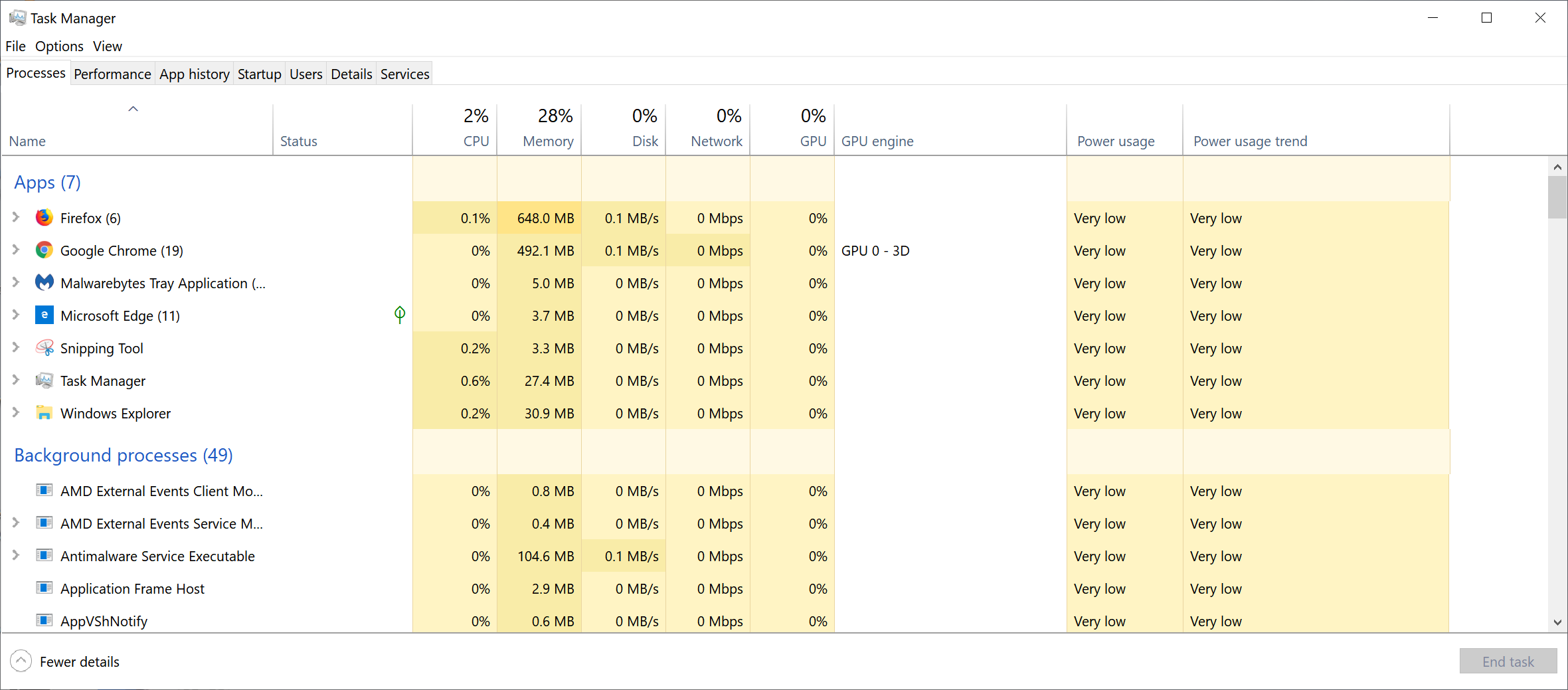This is an old revision of the document!
Table of Contents
Slow PC
This page is going to be a “work in progress” for a while. Why? Analysis of a Slow PC can expose more than one contributor to a slow PC. Using Windows Task Manager is usually an important part of analysis
HD (Hard Drive) or SSD (Solid State Drive) and Slow PC
For many years PC's were delivered with a Hard Drive. The electrical mechanical components in a HD contribute significantly, to the slowness of booting, loading a program and updates. In recent years computers are available with SSD. SSD is dramatically faster than HD. Computers with a HD can exhibit significant improvements in, booting, loading a program and updates, if the HD is replaced with an SSD. SSD costs have dropped significantly. If your computer is slow, an SSD upgrade will be easier on you bank account than a new computer. Today (June 4, 2019) a 250 GB SSD could be purchased for less than $60. It is not unusual for a new PC or laptop to exceed $400.
Analysis
Slow PC is a symptom with many causes. Determining why the PC is slow, requires analysis.
If the PC will get to the point of letting you log in, then the next step might be:
Observe what the PC is doing with the Task Manager. The Task Manager is like the dash board of a car. It can indicate what part of the PC is overheating or running low on resources.
Things the Help Center volunteers frequently discover with the Task Manager are:
- Multiple instances of antivirus programs. Typically they all want to do similar activities at system boot time, and the result is a lot of resource consumption that degrades the user experience. The typical solution is: uninstall the extra antivirus programs.
- The system is configured to invoke/start unnecessary programs at system boot. The solution. Disable the unnecessary programs at boot time. One tool that facilitates this action is the autoruns program from Sysinternals.com.
- The Windows Task Manager also has a Tab labeled Startup, that allows enabling and disabling programs that start at boot time.
How do you invoke the Task Manger?
Here are 4 options for starting the Task Manager.
- Right-click the Taskbar and click on Task Manager.
- Open Start, do a search for Task Manager and click the result.
- Use the Ctrl + Shift + Esc keyboard shortcut.
- Use the Ctrl + Alt + Del keyboard shortcut and click on Task Manager.
Now What?
You should see something like this:

Make sure the “Process” tab is selected. Now you should see columns for CPU, Memory, Disk and Network. If the system is SLOW then one of those columns probably indicate something close to 100%. A system that is not exhibiting slow behaviour, usually indicates values below 10% for CPU and DISK. It is not uncommon for just a couple of programs to be contributing to high utilization of CPU or Disk.
Tell Task Manager to sort on CPU or Disk
Clicking on the CPU column will sort the columns based on CPU utilization. The process using the most CPU resource will be at the top of the list. Clicking on the column again will reverse the sort order.
Clicking on the Disk column will sort the columns based on Disk utilization. The Process using the most Disk resource will be at the top of the list. Clicking on the column again will reverse the sort order.
Windows Resource Monitor
A next step in developing an understanding of “what is my computer doing” might include Windows Resource Monitor. Resource Monitor can provide more details about what resources an individual process is consuming. If you want to see all the servers that one web page needs, use Resource Monitor. The internet is truly a web on dependencies.
Here is one item about Windows Resource Monitor
References:
Do a Google search for: “troubleshooting with task manager”.
An alternative to Windows Task Manager is Sysinternals Process Explorer. Process Explorer has additional features. The Sysinternals Process Monitor utility is a more powerful tool for analyzing “why does my computer boot so slow?”.

Discussion